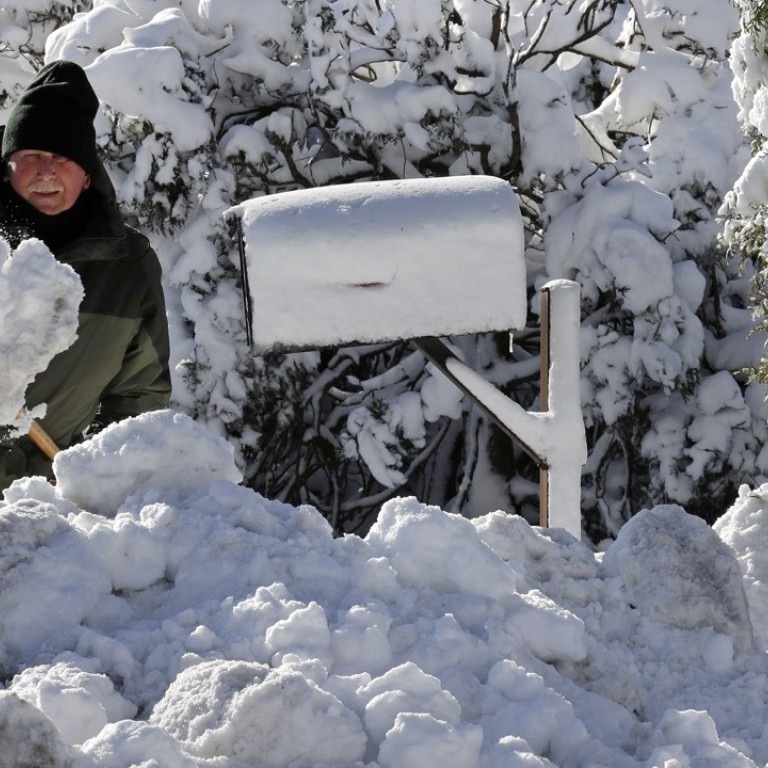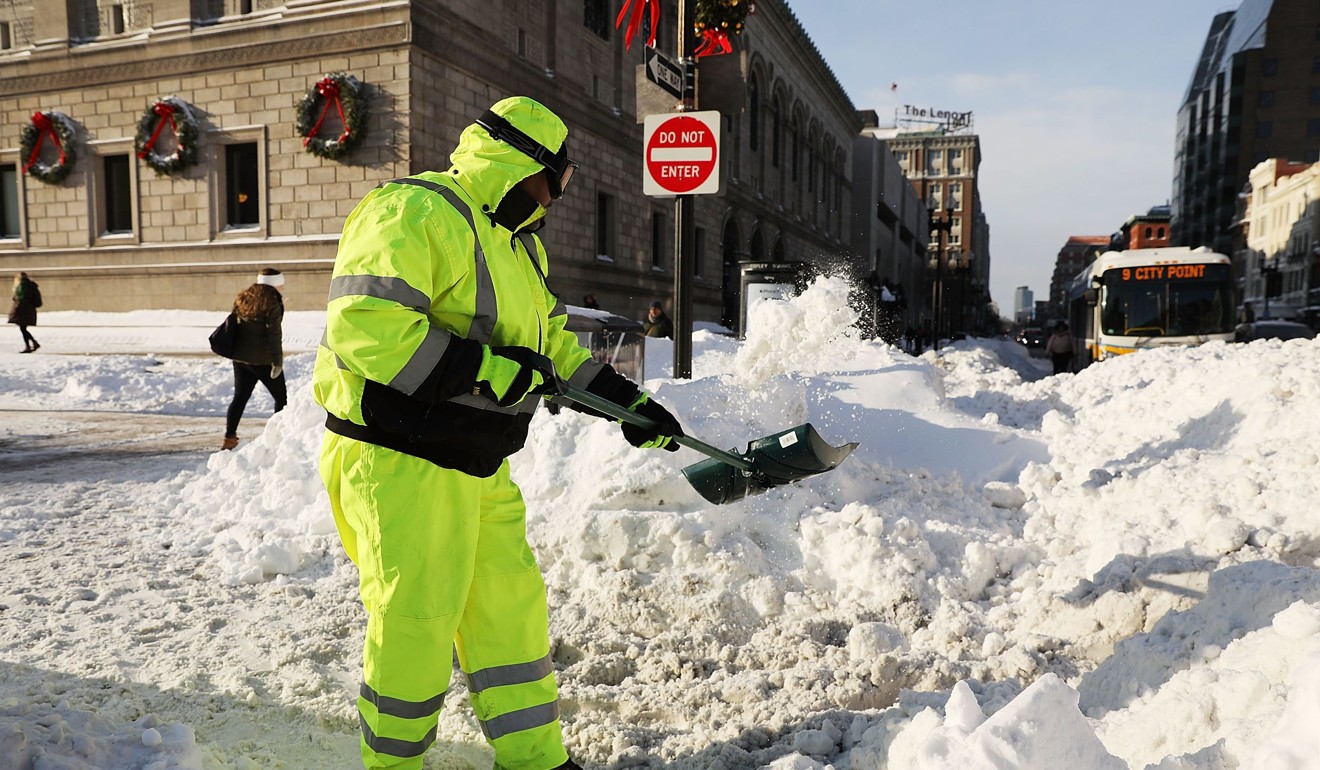
Man frozen to death on his porch joins US winter casualties as post-‘bomb cyclone’ temperatures drop
A 64-year-old Ohio man who was found frozen to death on his front porch by a meal delivery driver is yet another victim of the bitter cold that has fallen on the US and Canada. And following the ‘bomb cyclone’ that dropped snow across the East Coast on Thursday, things are only expected to get grimmer.
The Summit County Medical Examiner’s Office on Thursday confirmed that Darnell Wilson, of Akron, died of hypothermia.
It is unclear how long he had been on the partially enclosed porch before the Mobile Meals programme driver found his body on Tuesday. Temperatures in Akron, Ohio on Thursday reached a high of minus-10 degrees Celsius (14 degrees Fahrenheit).
And things have been equally bleak across the northeastern United States, where travel chaos caused by heavy snows is being followed by even colder temperatures.
Forecasters predict a deep freeze will grip the East Coast through the weekend, with strong winds and record-breaking cold air to blast the region.
“This is chilly, chilly stuff,” Brian Hurley, a meteorologist with the National Weather Service’s Weather Prediction Centre in College Park, Maryland, said.
Flights from New York and Boston were resuming Friday, although 20 per cent were again cancelled at John F. Kennedy airport, as well as 30 per cent from La Guardia, the flight-tracking site, Flightaware said.
Boston’s Logan airport also saw 30 per cent of its flights axed. The FlightAware reports nearly 5,000 cancelled flights across the United States during the ‘bomb cyclone’.
They include more than two-thirds of flights in and out of New York City and Boston airports.
Across the East Coast, residents and authorities were trying to clean up and access damages caused by the winter storm.

At least seven people have died in weather-related accidents so far.
Authorities in Virginia said two people died in the aftermath of the snowstorm. A girl was struck by a pickup truck while sledding and a 75-year-old man was hit by a snow plough.
Police said in a statement that the driver who hit the girl stopped immediately and the child was taken to a hospital where she died of her injuries. She was not immediately identified.
Barry Hale, the 75-year-old man who was hit by a plough while clearing snow from business car parks, died at a local hospital of his injuries.
Four people were killed in North Carolina and South Carolina after their vehicles ran off snow-covered roads, authorities said.
Another fatality was reported near Philadelphia when a car could not stop at the bottom of a steep, snow-covered hill and slammed into a commuter train. A passenger in the vehicle was killed. No one on the train was hurt.
Gusty winds in Newark, New Jersey, carried flames from a vacant building across the street to two other buildings. The flames also spread to two structures near the vacant building, damaging a total of five on Friday morning in Newark. Two firefighters received minor injuries.
As well as causing accidents, the weather has made life grim for millions across the US.
The arctic blast could make temperatures feel as low as minus-31 Celsius (minus-23 Fahrenheit) from Philadelphia to Boston and make residents of states like Maryland and Virginia shiver from temperatures as low as minus 12 Celsius (10 Fahrenheit).
The wind chill could make it feel like minus 37 Celsius (minus 35 Fahrenheit) in the Berkshire Hills of western Massachusetts, the National Weather Service said.
Sunday morning should bring the coldest temperatures from Portland, Maine, to Washington, DC. “That’s when you’ll see records being challenged or broken, with temperatures at or near-zero in many places,” Hurley said.

Most of the snow from Thursday’s storm fell in the southern part of New Jersey, with Cape May Court House receiving 43 centimetres (17 inches). A wind chill advisory is effect for the state until Saturday.
Powerful winds brought coastal flooding that reached historic levels in some New England communities, with icy water overflowing piers, streets and restaurants and stranding some people who had to be rescued.
The only place where blizzard conditions were reported during Thursday’s storm, however, was Block Island, Rhode Island.
The storm began days ago in the Gulf of Mexico and first struck the Florida Panhandle. By Thursday, it was wreaking havoc as blizzard warnings and states of emergency went into effect along the US Eastern Seaboard. Wind gusts hit more than 113kph (70mph) in places.
In the southern US, the winter weather forced portable toilets to be put in place outside Mississippi’s Capitol after pipes burst. It also caused iguanas to become sluggish and topple from trees in South Florida.
Residents of southeast Georgia were treated to a rare 15 centimetres (half foot) of snow.
More seasonable weather is expected to return early next week with temperatures at 1.7 Celsius to 4.5 Celsius (high 30s and near 40s Fahrenheit), he said. For some, it will feel downright balmy.


